E-commerce package delivery is insanely convenient. No driving. No waiting in lines. No risk of items becoming out of stock before you get there.
But having those packages stolen? Not so convenient.
As retail deliveries have become ubiquitous, so too has package theft, so much so that a cottage industry of “porch pirates”—thieves who steal packages left outside by carriers—has sprung forth.
Having a package stolen is frustrating, time-consuming, and cost you money. Sure, sometimes all you’re losing is a box of garbage bags or a package of back scratchers. But sometimes you might have a high-ticket purchase or a sentimental item sent by family snatched away.
It’s extremely difficult (and often impossible) to track down stolen packages after the fact. So for most people, the best step forward is deterrence to keep porch pirates at bay.
Today, I’m going to provide some of the best ways to prevent your packages from being stolen. These simple tricks can give you some peace of mind that your deliveries will be safe from the clutches of local porch pirates.
How Common Is Porch Piracy?
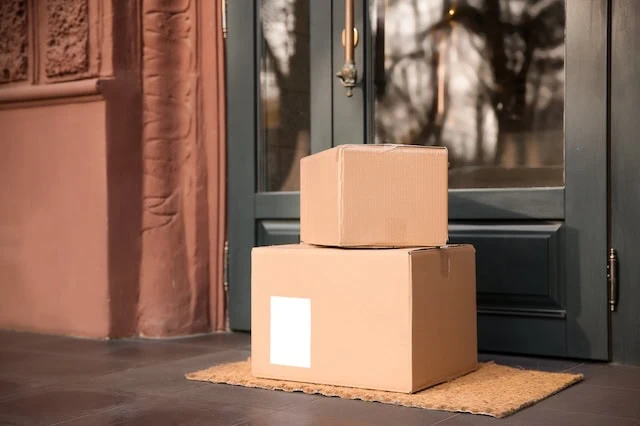
Porch piracy is a lot more widespread than people realize.
The concrete numbers vary by survey, but broadly speaking, data shows that between 35% and 45% of Americans have fallen victim to a porch pirate at some point in their lives. According to a January 2024 report from Security.org, some 44 million Americans (17%) lost a package to a porch pirate over just the prior three months.
People are happy to point the finger. A survey by Lombardo Homes found that more than half of Americans believe retailers don’t do enough to prevent delivery theft, and roughly the same number think delivery companies aren’t doing their part.
But ultimately, the buck largely stops at your doorstep. If a package is delivered to the correct address, it’s up to consumers to protect their purchases.
How to Stop Porch Pirates
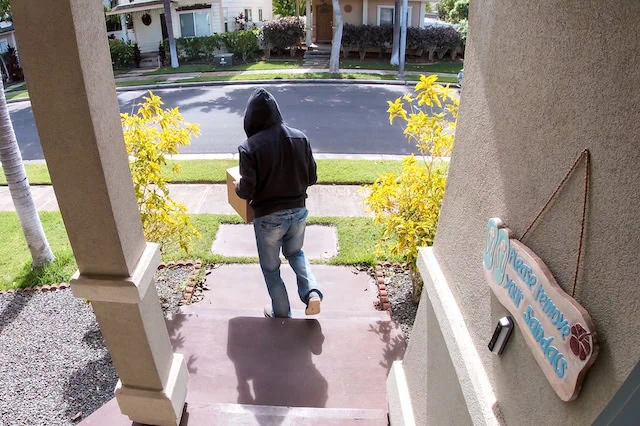
You might imagine porch pirates as careful planners who stake out homes and wait patiently for the right moment to strike.
While this type of porch pirate exists, most package thefts tend to be crimes of opportunity.
A person walking or driving by your home sees an attractive-looking box, perhaps one donning the logo of an electronics or luxury brand, and quickly grabs it. If the porch pirate doesn’t see a package, or has reason to believe they would be caught, there’s a high chance they’ll skip your home and move on to an easier target.
Try these strategies to make your home unappealing to thieves.
1. Choose Package Pickup Over Delivery

Do you order online primarily for the simpler shopping experience, and not necessarily the convenience of home delivery? Well, if you don’t mind a little driving to pick up your order, this strategy keeps packages from ever hitting your porch—robbing porch pirates of the opportunity to steal them.
For Amazon orders, consumers can sometimes choose to have eligible packages delivered to Amazon Lockers, Amazon Counter, or UPS AccessPoint Locations. Not every order has these options, but when they do, you can select that option during checkout.
Families who get frequent deliveries and are unable to bring them inside quickly might also decide to get a Post Office Box (PO Box). These are locked mailboxes at a post office that people rent. As a bonus, a PO Box is a great way to avoid giving out your home address too often, giving you more privacy.
Related: 10 Best Ways to Protect Yourself From Financial Fraud
2. Use “Ship to Store” Options

In a similar vein, you can select “ship to store” options.
Did you find the perfect dress, but it’s sold out in your size at the store nearby? You could order the proper size online and have it shipped directly to your home. But if your area has a porch pirate problem, most brick-and-mortar retailers will let you buy online but have your order shipped to a physical store location.
Sure, driving to the store to pick it up might be a bit less convenient, but it’s far less work than trying to get reimbursed for a stolen package.
Plus, if you see the item and have instant buyer’s remorse, you’re already where you need to be to make a return.
Related: 10 Items You Should Always Buy New
3. Package Tracking

While some people hate delivery workers knocking or ringing their doorbells because it wakes up babies or riles up pets, others wish they would take these measures more often. Sometimes, the deliverer is as quiet as a mouse … and you don’t realize your boxes have been delivered until you leave the house or open the door for another reason.
If you want to be bothered, sign up for package tracking functions like delivery notifications. A notification on your phone can inform you when your packages arrive so you can grab them right away. The less time boxes sit on a porch, the less likely they are to be swiped. Among the most prominent options:
- For U.S. Postal Service packages, sign up for Informed Delivery. The service lets you preview packages that will arrive soon and sends alerts about the status of your delivery.
- FedEx Delivery Manager works similarly. Users can easily track their boxes, receive notifications, give instructions, or schedule a delivery time. Choosing your delivery time isn’t free, though.
- UPS has two membership options for consumers who want more control over their deliveries. UPS My Choice is free and lets people request package delivery to a neighbor, receive delivery notifications and photos, and view estimated delivery times. However, options like changing the delivery date, have boxes delivered to a UPS location or different address, and two-hour delivery windows incur additional fees. Rather than pay for additional services every time, people who frequently get packages might sign up for UPS My Choice Premium. It costs $19.99 per year, but everything is included.
- Amazon will send emails and, if enabled, push notifications whenever a package is delivered.
My significant other receives a lot of deliveries as part of his job and is signed up for all the free tracking services. Because I work from home and he doesn’t, he’ll sometimes send me a text during the day to grab some delivered packages off the porch. It gives him peace of mind to know porch pirates won’t have a chance to grab any of his work tools.
Related: ‘Dirty Dozen’: 12 Tax Scams to Watch Out For [And How to Avoid Them]
4. Provide Specific Delivery Instructions
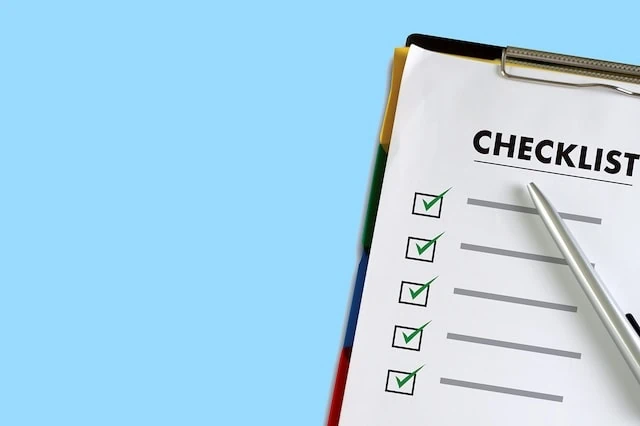
In addition to letting you track your deliveries, Amazon, the UPS My Choice tool, FedEx Delivery Manager, and USPS Informed Delivery will all let you leave delivery instructions.
For instance, if you know you’ll be home, you might ask the carrier to knock on the door or ring the doorbell. Whether you’ll be there or not, you could request a specific delivery spot, asking the package to be obscured by, say, a plant or a wall.
Importantly, not every single package is automatically eligible for these requests. Also, carriers sometimes miss these instructions. So for extremely valuable packages, you might want to employ this method alongside several others listed here.
Related: Always Buy the Cheapest Versions of These Products
5. Security Cameras + Motion-Sensing Lights
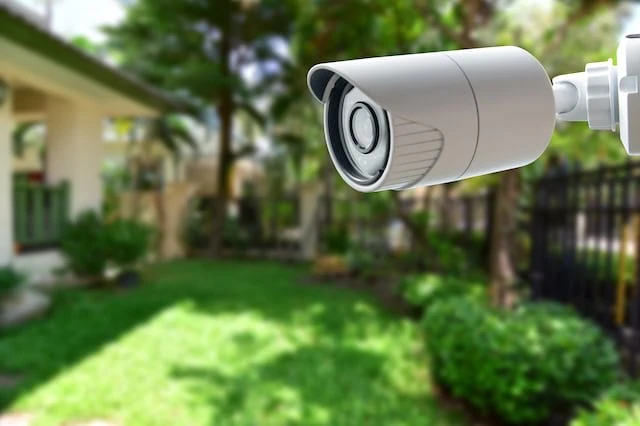
Thieves want to remain anonymous. If one home clearly has security cameras, and the one next door doesn’t, you can guess which one a porch pirate is more likely to choose. If you’re particularly cash-strapped, even a fake security camera can deter theft—after all, your average stranger probably can’t tell whether a camera is real or not.
Security cameras are a great way to ward off porch pirates at any time of day. But another way to bolster your nighttime defenses is to install motion-sensing lights, which turn on whenever they detect motion after dark. Many people will turn tail the second a light comes on. These can be effectively used near any area of your house where delivery services drop your packages, especially if that area isn’t normally well-lit.
That said, you can optimize your security by using a combination of cameras and lights.
Related: Elderly Scams: Beware These 15 Schemes Targeting Seniors
6. Get Packages Delivered Inside Your Home or Garage
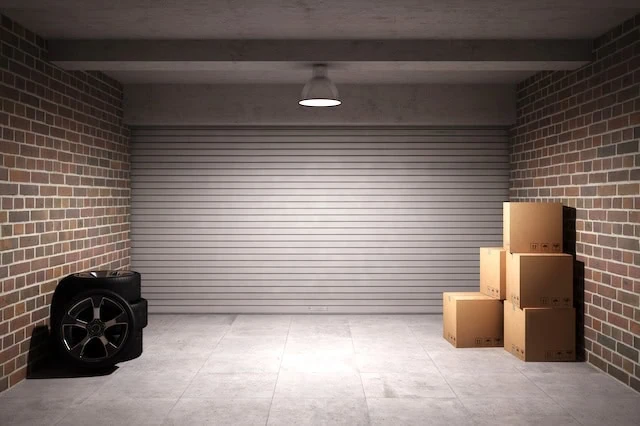
Having a package delivered in your home or garage isn’t always an option, but when it is, it’s an extremely convenient one.
If you’re an Amazon Prime member, you could get your packages put inside your garage and away from the eyes of thieves. Amazon Key In-Garage Delivery has users link their garage door to Amazon Key in the app. At every checkout, the user is given the option to choose an in-garage delivery.
Per usual, consumers receive real-time delivery notifications. Once the Amazon worker reaches your home, the person gets a one-time secure access. Amazon won’t open the door until the package and driver’s location are confirmed. Customers are never expected to share garage codes.
Is Walmart your go-to store? Walmart+ members can get “InHome” delivery. Whether you need food or household essentials, you can opt to have your order brought into your garage, home, or even have food put right into your fridge! If you’re home, you can let the person inside. Otherwise, entry is done through a keypad or smart entry device, meaning it can’t be done with a physical key.
The service is a free part of the membership and already includes tips. You must make a $35 minimum order amount, though, so don’t expect a Walmart employee to bring over a single carton of milk.
Personally, if I were to use these kinds of services, I would lock the garage door to the house and install a security camera in the garage for some additional comfort. These are extremely convenient options, but there is a higher degree of risk.
Related: 10 Items You Should Always Buy Used
7. Get Packages Delivered to a Work Address

Rather than getting an important package delivered to your home, consider getting it sent to your work address … if your boss has no issues with it.
Packages delivered to workplaces are usually brought inside and often handed directly to a person. Thieves are much less likely to try to steal a box inside a busy building that’s likely equipped with cameras than they are on an unmonitored porch in a quiet neighborhood.
Another benefit of workplace deliveries is that you’re ensured your package is delivered during normal business hours, rather than late at night. A delivery driver can bring a package to your house when you’re already asleep, but they can’t bring something to a closed business building.
Related: 7 Best Schwab Funds to Buy
8. Make Agreements With Neighbors
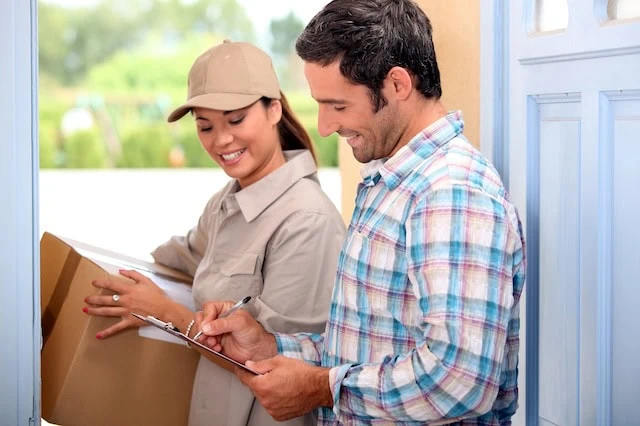
Are you friendly with your neighbors? They might be willing to help you out.
If you’ve already entrusted a neighbor with a key to your house in case of an emergency, you could ask them to stick a package in your house when they know you aren’t home. Alternatively, they could grab sitting boxes and have you pick them up later. You might even get some expensive orders delivered straight to your neighbor with the agreement that you’ll retrieve them once you’re home.
The drawback of only utilizing this method is that neighbors might not always be around and might not always notice delivered packages before porch pirates do.
Also, if you’re asking these favors, just make sure you show your appreciation with some kind deeds of your own.
Related: The 10 Best Vanguard Funds to Buy for the Everyday Investor
9. Use Anti-Porch Pirate Products

A few companies heard consumers’ porch pirates complaints and responded by designing several types of anti-porch pirate products.
For example, you can find a “porch pirate bag” on sites like Amazon and Etsy. The bag locks onto a mailbox, porch post, handle, or elsewhere. Delivery people can place the package into the bag, then lock it. However, based on comments, results seem to vary—some claim it’s a great deterrent, but others say delivery people simply won’t use the bags.
Similarly, some people use a porch lockbox or package vault. These boxes are a bit sturdier than bags and seem to have higher ratings, though they’re also more expensive. It’s worth noting that some buyers have complained that gaps in these boxes let water in, so they might not be a great fit for people in rainy or snowy locations.
If you’re looking for something more technologically advanced, there are products like the Package Guard. When a package is delivered and set on one of these devices, Package Guard sends you an alert—and it can even notify a trusted neighbor you designate. If the package is removed without you using your app, an alarm will go off.
I have not personally used any of these products, so I highly recommend due diligence if you choose to purchase one.
Related: 9 Best Fidelity Index Funds to Buy
10. Obstruct View of Package Delivery Areas

Thieves tend to steal packages that are clearly visible—it’s quicker, it’s easier, and there’s less time spent than searching for hidden packages, thus there’s less of a chance of getting caught.
So, another way you can deter would-be porch pirates is to obstruct the view of areas where packages are typically delivered.
Large plants, furniture, and even decorative pieces can help eliminate sightlines to your packages. And many carriers are well aware of porch piracy (and often want to help prevent it), so if you supply the hiding spot, the delivery person may very well use it to keep your package hidden from view. Help them help you.
Related: 10 Best Fidelity Funds to Buy
What Should I Do If My Package Is Stolen?

Even if you do everything right, porch pirates might end up stealing one of your packages. It happens.
But if this happens to you, don’t automatically chalk it up as a loss and move on.
First, check your tracking number to see whether the package was delivered. If you confirm it was, ask other members of your household if they brought a package inside.
Once you’re sure a delivery was stolen, contact both the retailer and the carrier. Sometimes, they will either reimburse you or re-deliver the product.
If neither is helpful, and you paid with a credit card, see if you have credit card purchase protection that will cover your loss. Sometimes, homeowners’ or renters’ insurance will cover mail theft. However, doing so will likely only be worth it if you’re making a claim for a high-ticket item that exceeds your deductible.
For stolen large purchases, consider contacting the authorities. Some people also try out their detective skills by looking at new For Sale ads on Craigslist and Facebook Marketplace. If you bought a rare item and it shows up online for sale near you the next day, that might have been your purchase. But if you do play sleuth, avoid directly contacting the assumed thief—instead, raise the issue with your local police.




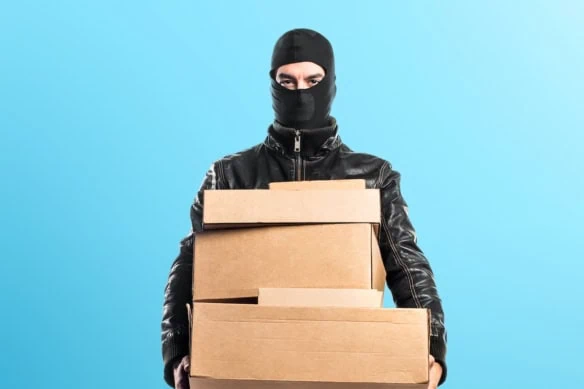


![How to Get Free Money Now [14 Ways to Earn Money Today] 30 how to get free money](https://wealthup.com/wp-content/uploads/how-to-get-free-money-600x403.webp)
